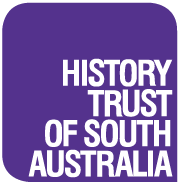The Museum was brought out from England in kit form in 1877 and erected near the jetty. The building was originally used as a general cargo shed for the early settlers of the town.
Today an essential focus is the story of the windjammers and the men who sailed them to Europe via Cape Horn loaded with bagged grain from Port Victoria and other Spencer Gulf ports. Photographic displays and a DVD documentary and slide show help to portray this trade which began in 1879 and ended in 1949 when the Pamir and the Passat made their final voyage bringing to an end this fascinating era. Displays paying tribute to the men and women who sailed on these ships – The Cape Horners – feature both in the museum and on information panels on the forecourt. Wardang Island offered a protective anchorage for the sailing ships but also became known as the ‘Graveyard of Ships’ as a number of ships were wrecked around its rocky shores.
Displays of artefacts from the wrecked ships and how they came to grief feature in wall displays around the museum. An old diving suit formerly used for jetty repairs and assessing the damage to sunken ships is a significant part of this display. A photographic history of the town, its people and the tradesman of the port, in particular those involved in the bag grain agencies is also central to the story told in the museum. Closely linked to this is the history of the farming communities surrounding the town beginning with the early pioneer pastoralists and the sheep and grain farmers that followed them. A ‘First Encounters’ room tells the story of the traditional Narungga Aboriginal people and their culture as well as life on the nearby Port Pearce Mission station and more recently the rebirth of their Narungga language and culture.
Free leaflets ‘A Timewalk through Port Victoria’, ‘Port Victoria Cliff Top Walk’ and ‘Port Victoria Geology Trail’ are available in the museum to add further understanding of how life evolved in this coastal community.

